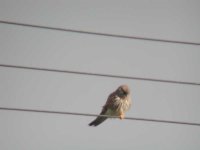jeff
Well-known member
Any tips on how to get good focus on distant birds?
It's not too bad with closer birds are they tend to fill the screen so you get a better idea of if in focus or not, but distant birds tend to be very small in the screen and it's difficult to see if they are in focus or not (as with the attached bird).
I have a x2 viewer thing, but find it even worse when that's attached as the screen looks like a honeycombe :-(
Any helpful hints, i'm using macro and letting it autofocus. I'm sure it could have done better.
TIA
It's not too bad with closer birds are they tend to fill the screen so you get a better idea of if in focus or not, but distant birds tend to be very small in the screen and it's difficult to see if they are in focus or not (as with the attached bird).
I have a x2 viewer thing, but find it even worse when that's attached as the screen looks like a honeycombe :-(
Any helpful hints, i'm using macro and letting it autofocus. I'm sure it could have done better.
TIA






